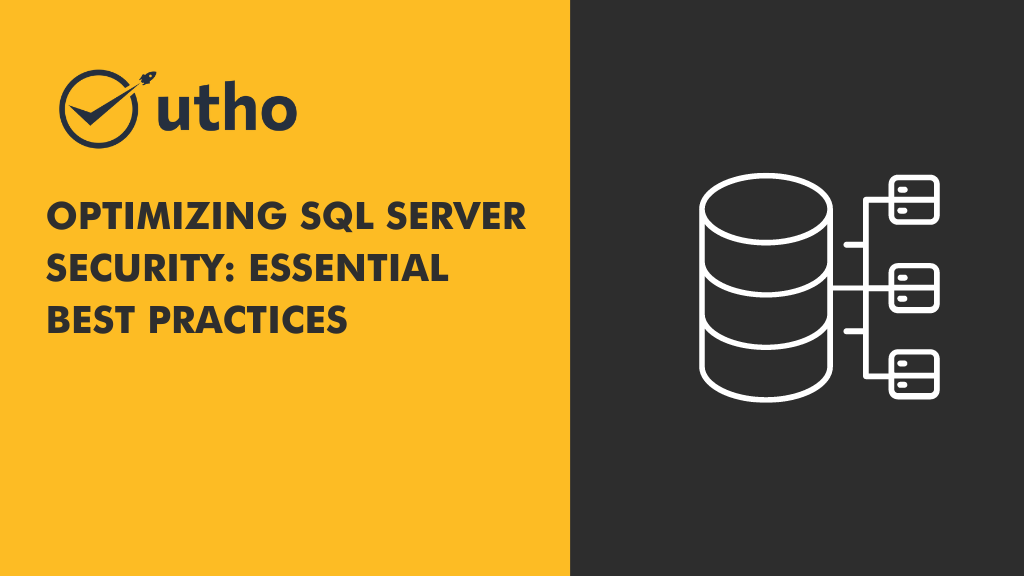Open source software has changed how developers and businesses use the cloud. It offers flexibility, innovation, and community support. Unlike proprietary solutions, open source tools are free. Users can view, modify, and enhance the code. This has created a culture of collaboration and improvement. It's made open source vital in today's tech landscape. Open source tools let businesses customize their cloud environments. They improve security and cut costs. So, they are popular with organizations of all sizes.
A key benefit of adopting open source cloud tools is the transparency they provide. With open source, there are no hidden functionalities or backdoors—everything is visible in the codebase. This transparency builds trust. It lets businesses ensure their software meets security and compliance needs. Moreover, these tools often have strong communities. They improve the tools, provide rapid updates, and add new features. As cloud adoption grows, many organizations are using open-source tools. They want to build efficient, scalable cloud infrastructures.
This article will explore ten types of open-source cloud tools. They can help developers and businesses. They can streamline operations, improve performance, and ensure flexibility. Each category will include practical insights on how to use these tools, why they are beneficial, and the scenarios where they shine the most.
1. Infrastructure as Code (IaC) Tools
What Are They? Infrastructure as Code (IaC) tools let you use code to define, deploy, and manage your cloud infrastructure. This is better than manual processes. This approach ensures consistency across all environments. So, it is popular with cloud developers.
Popular Open Source Tools: Terraform, Ansible, and Pulumi are some of the leading open source cloud tools for IaC. Terraform, by HashiCorp, uses a declarative language to define cloud resources. It makes it easier to replicate environments. Ansible simplifies config management and automation. It's ideal for provisioning resources across hybrid cloud environments.
How to Implement:
- Use Terraform scripts to define your infrastructure in a version-controlled repository like Git.
- Use Ansible playbooks to automate repetitive tasks. This includes server setup and application deployment.
- Integrate these tools with CI/CD pipelines to automate infrastructure changes.
Why It’s Important: IaC tools help prevent configuration drift, where environments diverge over time due to manual changes. They are key for consistent setups across cloud platforms. So, they are essential for any open-source cloud tools stack.
Best For:
- Multi-cloud Deployments: Ideal for managing resources across AWS, Azure, and Google Cloud.
- Teams Practicing DevOps: Automating infrastructure setup saves time and reduces human error.
2. Containerization Tools
What Are They? Containerization tools package applications and their dependencies into containers. These isolated units are portable and consistent across environments. Containers have become a standard for deploying microservices-based applications.
Popular Open Source Tools: Docker and Podman are top open-source tools for containerization. Docker makes it easy to create and manage containers. Podman offers a Docker-like experience without needing a daemon. It also has better security features.
How to Implement:
- Use Docker to create container images and manage containerized applications.
- For advanced use cases, use Kubernetes to orchestrate Docker. It lets you manage container deployments at scale.
- Use Podman for environments where rootless containers and security are a priority.
Why It’s Important: Containers ensure that apps run the same, no matter where they are deployed—be it on a developer’s laptop, on-premises, or in the cloud. This is a key reason why tools like Docker are now foundational in cloud-native development. They are open-source and consistent.
Best For:
- Microservices Architectures: Containers are perfect for breaking applications into smaller, manageable services.
- Hybrid Cloud Deployments: Containers simplify deploying apps across cloud providers and on-premises servers.
3. Container Orchestration Tools
What Are They? Container orchestration tools automate the deployment, scaling, and management of containerized applications. As container use grows, managing them at scale becomes complex, which is where orchestration tools come in.
Popular Open Source Tools: Kubernetes is the top open-source tool for container orchestration in the cloud. It allows developers to deploy, manage, and scale containers across clusters of machines. Also, tools like OpenShift, which is based on Kubernetes, offer enterprise-grade features while being open source.
How to Implement:
- Use Kubernetes to create clusters for deploying containerized apps. Use services, pods, and deployments.
- Manage resource allocation using Kubernetes namespaces and resource quotas to optimize cluster performance.
- Integrate Helm, another open source tool, for managing Kubernetes applications through reusable templates.
Why It’s Important: Orchestration tools, like Kubernetes, are critical for managing complex, cloud-native applications. They automate scaling, load balancing, and self-healing. This reduces the manual effort needed to manage production workloads.
Best For:
- Large Enterprises: Kubernetes excels at managing applications with high availability requirements.
- DevOps Teams: Automating deployments with Kubernetes ensures consistency and reliability in cloud operations.
4. Monitoring and Logging Tools
What Are They? Monitoring and logging tools show the performance, health, and security of cloud resources and apps. They are crucial for identifying issues before they impact users.
Popular Open Source Tools: Prometheus and Grafana are two widely used open source cloud tools for monitoring. Prometheus collects metrics from various services and stores them. Grafana visualizes these metrics with interactive dashboards. Elastic Stack (Elasticsearch, Logstash, and Kibana) is a popular suite for managing logs and searching large datasets.
How to Implement:
- Use Prometheus to scrape metrics from your cloud services and set up Grafana to visualize them.
- Set up Elasticsearch for indexing logs and Logstash for processing and transporting data.
- Create custom Grafana dashboards to track key metrics. These include CPU usage, memory consumption, and error rates.
Why It’s Important: Monitoring and logging are key open source tools. They maintain the health of cloud environments. They help teams find bottlenecks, spot anomalies, and ensure services run smoothly.
Best For:
- 24/7 Operations: Monitoring tools help ensure uptime by alerting teams to potential issues.
- Organizations with Complex Infrastructures: We must see cloud operations to maintain performance in large-scale deployments.
5. CI/CD Tools
What Are They? CI/CD tools automate building, testing, and deploying applications. They are key components of modern software development, enabling faster release cycles.
Popular Open Source Tools: Jenkins, GitLab CI, and Tekton are leading open source cloud tools in the CI/CD space. Jenkins is highly customizable and supports many plugins. GitLab CI, however, offers seamless integration with Git repositories. Tekton, part of the Kubernetes ecosystem, is ideal for cloud-native CI/CD pipelines.
How to Implement:
- Use Jenkins pipelines to automate testing and deployment of applications.
- Integrate GitLab CI with version control for automated builds triggered by code commits.
- Deploy Tekton pipelines for Kubernetes-based applications, allowing for native integration with cloud-native workflows.
Why It's Important: CI/CD tools streamline the software delivery process, making it easier to test new features and deploy them quickly. They are vital for high-quality releases and smooth updates to users.
Best For:
- Frequent-release development teams benefit from CI/CD automation. It speeds up feedback loops and reduces the time between developing and deploying features.
- Cloud-Native Apps: Tools like Tekton enable easy CI/CD integration with Kubernetes.
6. Database Management Tools
What Are They? Database management tools are vital for managing databases in cloud environments. They store and maintain critical data. These open source cloud tools enable efficient data handling, scaling, backup, and performance optimization.
Top open-source cloud database tools are PostgreSQL, MySQL, and Apache Cassandra. PostgreSQL has advanced features, like JSON support and full ACID compliance. It is suitable for complex applications. MySQL is a popular relational database. Cassandra is best for distributed databases needing high availability.
How to Implement:
- Use PostgreSQL for apps needing complex queries and transactions. Integrate it with cloud services like AWS RDS for scalability.
- Set up MySQL for web applications, leveraging replication features for high availability.
- Use Apache Cassandra for apps that need to manage large data across multiple cloud regions.
- Importance: Database tools keep data secure, quick to access, and available during failures. These open-source cloud tools are vital for data-intensive apps. They need high availability and performance.
Best For:
- E-commerce Platforms: A strong, scalable database is needed. It must manage customer and transaction data.
- Big Data Apps: Use distributed databases, like Cassandra, for huge datasets across cloud regions.
7. Configuration Management Tools
What Are They? Configuration management tools let developers automate and manage cloud setups and apps. These open-source cloud tools help keep configurations the same on multiple servers. They reduce manual errors in configuration.
Popular Open Source Tools: Ansible, Puppet, and Chef are popular tools in this category. Ansible is known for its simplicity, using YAML files to automate configurations. Puppet and Chef, on the other hand, provide a more extensive framework for managing complex cloud environments.
How to Implement:
- Use Ansible playbooks to automate server setup, software installation, and configuration changes.
- Use Puppet's declarative language to manage large-scale infrastructure. It includes setting up dependencies between services.
- Integrate Chef with cloud platforms to automate application deployments across multiple environments.
Why It’s Important: Configuration management is a key open-source cloud tool. It prevents "configuration drift" and keeps environments consistent over time. Automating configurations reduces manual errors. It makes scaling infrastructure easier.
Best For:
- DevOps Teams: Configuration management tools are vital for automating infrastructure changes in a DevOps pipeline.
- Hybrid Cloud Environments: These tools ensure consistency across on-premises and cloud-based resources.
8. Security and Identity Management Tools
What Are They? Security and identity management tools ensure that access to cloud resources is controlled and secure. These open-source cloud tools manage user identities, roles, and permissions. They also monitor for suspicious activities.
Popular Open Source Tools: Keycloak and OpenIAM are popular choices for identity and access management. Keycloak provides authentication, authorization, and single sign-on (SSO) capabilities. OpenIAM offers identity governance and access management features, suitable for enterprise-level applications.
How to Implement:
- Use Keycloak to manage user logins for multiple apps. Integrate it with OAuth2 for secure API access.
- Use OpenIAM for enterprise-grade identity management. It lets you manage roles, permissions, and audit logs across cloud environments.
- Use these tools with monitoring solutions like Wazuh, an open source SIEM. They will help detect security threats and ensure compliance.
Why It’s Important: As cloud environments grow, managing user access becomes more complex. These open source cloud tools ensure that only authorized users can access sensitive resources, helping to prevent data breaches and compliance violations.
Best For:
- For enterprises with multiple applications, centralized identity management tools make it easier to manage identities across them.
- Regulated Industries: Security tools are vital for complying with data protection laws.
9. Collaboration and Communication Tools
What Are They? Collaboration and communication tools help teams work together effectively, regardless of location. These open source cloud tools foster real-time collaboration, code review, and project management, essential for remote and distributed teams.
Popular Open Source Tools: Mattermost and Rocket.Chat are open source alternatives to tools like Slack. They provide real-time messaging, video calls, and integration capabilities with other developer tools. GitLab is mainly a CI/CD platform. But, it has built-in tools for code review and issue tracking.
How to Implement:
- Set up Mattermost or Rocket. Chat for internal communication. Host them on your cloud for better data control.
- Use GitLab’s project management features for code reviews, issue tracking, and version control.
- Integrate these tools with cloud services like Kubernetes for DevOps. This allows teams to collaborate on infrastructure changes.
Why It’s Important: Collaboration tools boost productivity. They keep teams aligned on project goals. As remote work grows, these open-source cloud tools enable vital communication and collaboration. They are key to staying efficient.
Best For:
- Remote Teams: Distributed teams can use these tools to stay connected and manage projects efficiently.
- DevOps Teams: Tools like GitLab streamline development. They combine version control, CI/CD, and collaboration in one platform.
10. Backup and Disaster Recovery Tools
What Are They? Backup and disaster recovery tools help ensure that data remains available and recoverable in the event of a failure or data loss. These open source cloud tools are critical for maintaining business continuity and minimizing downtime.
Popular Open Source Tools: Bacula, Duplicati, and Restic are some of the most effective open source solutions for cloud backups. Bacula is perfect for enterprise backups. It has advanced features, like deduplication and cloud storage integration. Duplicati and Restic are tools for encrypted backups to cloud storage. They're simple but powerful.
How to Implement:
- Use Bacula for setting up automated, scheduled backups of databases and file systems to multiple cloud regions.
- Implement Duplicati for backing up encrypted data to popular cloud storage services like AWS S3 or Google Drive.
- Integrate Restic with your CI/CD pipelines to automate backup creation as part of the deployment process.
Importance: Backup and disaster recovery stop data loss from accidental deletion, system failures, and cyberattacks. These open-source cloud tools ensure quick data restoration. This minimizes downtime and keeps the business running.
Best For:
- E-commerce Platforms: Regular backups allow quick restoration of customer and transaction data.
- Companies with Regulatory Requirements: Firms handling sensitive data must secure and comply with backups.
Embrace Open Source for a Flexible and Scalable Cloud Strategy
Adopting open-source cloud tools is a great way for businesses and developers. It helps them build a flexible, scalable, and secure cloud. Open source has the tools you need to customize your cloud. This includes automating infrastructure with Terraform. It also includes deploying apps with Docker and Kubernetes. Finally, it includes ensuring data safety with reliable backups. These tools enable more transparency, community improvements, and customization. They are vital to any modern cloud strategy.
For those seeking a cloud platform that embraces the open-source ethos, Utho is a standout choice. Utho is a cloud platform inspired by open source. It offers the flexibility and transparency of open-source tools. It also provides enterprise-grade reliability and support. It lets developers use their favorite open-source tools. They get a secure, high-performance cloud for startups and large firms.
Utho lets you build a cloud infrastructure that matches your vision. It optimizes costs and ensures top security.




